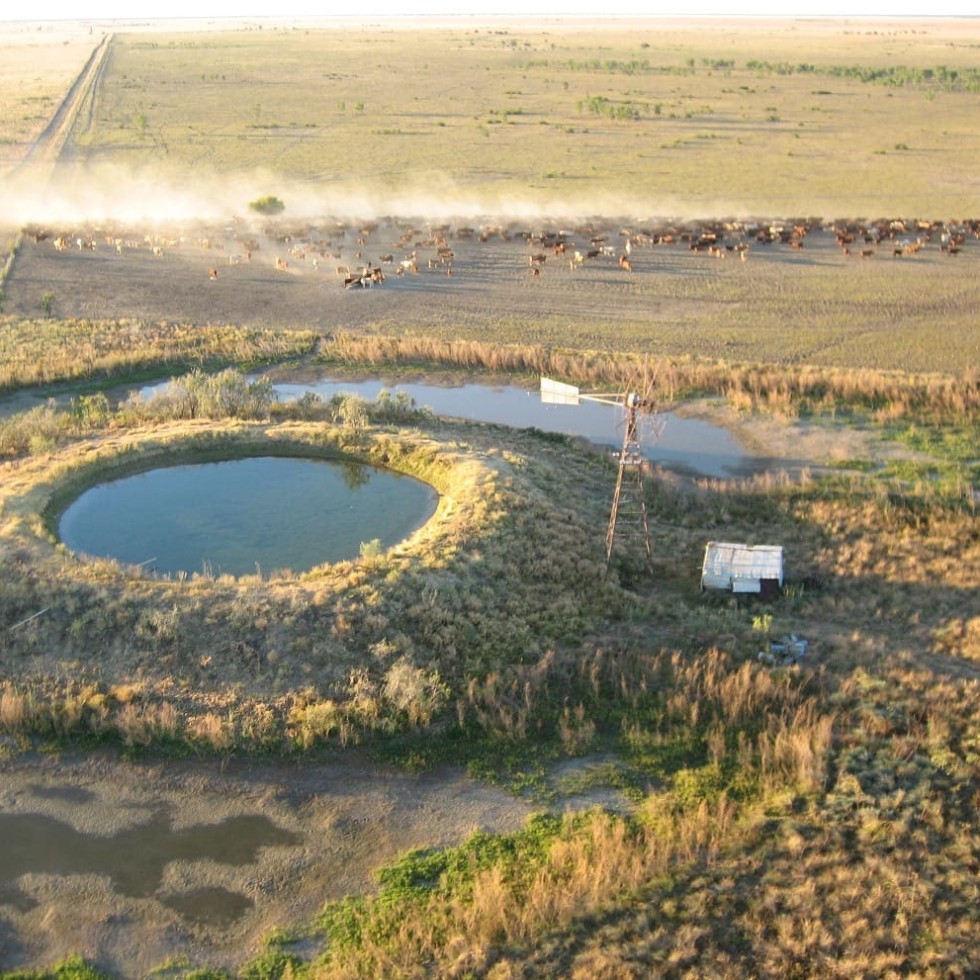 Australia should prepare now for dry times ahead by ‘banking’ its water underground when rainfall is plentiful, according to an important new scientific study.
Australia should prepare now for dry times ahead by ‘banking’ its water underground when rainfall is plentiful, according to an important new scientific study.
"There is enormous national potential to store surplus water in aquifers, ensuring sufficient water is available for cities, homes, industry, farming and the environment when drought strikes", says researcher Andrew Ross of the National Centre for Groundwater Research and Training.
“We need to start thinking of surface water and groundwater as a single resource – and managing them together, in an integrated way over time,” Mr Ross said.
“We also need to tune water management to our climatic cycles and to harness the power of floods to help us to deal with drought. That means banking surplus water underground during wet periods and bringing it up for use during dry times.
“While it needs national leadership, the concept of water banking can be implemented at grassroots level by Landcare and catchment management groups, even by individuals, as well as by larger organisations and agencies. This role can breathe new life into the Landcare movement,” he adds.
In his doctoral thesis, Mr Ross proposes that Australia should develop and implement water banking at a national scale, taking advantage of the wet/dry climate cycle and the immensity of its network of underground aquifers.
Based on observations of water management in the Murray Darling Basin and the western USA, he argues that “water banking can provide a big part of the solution to Australia’s perpetual boom/bust relationship with water and the climate."
"Water banking augments the natural processes of water storage in the landscape, avoiding evaporative losses. In the MDB up to 3000 gigalitres (GL or billion litres) of water a year evaporates from surface water storages.”
Water banking helps communities adjust to climate variability and uncertainty, and enables irrigators to receive additional water during droughts. In California one water bank holds up to 800 GL for its members; another has released 750GL back to its members over a recent three-year period.
Water banking can assist environmental water managers by allowing them to synchronise supply with specific environmental watering requirements, Mr Ross said. It helps the development of water markets by bringing diverse sources of water under common rules of use and trade.
“It can also help to increase Australian agricultural exports. Water banking expertise and technology could also be a valuable new export industry in its own right.
"Historically Australians have relied on dams to provide water for agriculture and cities. This strategy is not sufficient to cope with increasing climate variability or droughts as demand for food and water grows. Water banking can help ensure that there is enough water both for food production and the environment in the MDB – rather than having to close down irrigation when drought hits,” he said.
Although the volume of storage underground is sometimes unknown, vast networks of aquifers such as those in the Great Artesian Basin and the MDB can probably store more than what is required by agriculture, industry and communities.
“We are already storing about 45GL of water underground in the Burdekin region of Queensland every year – for use in agriculture and horticulture. In Orange County, California around 300 GL is stored each year – enough for the annual household use of 2.3 million people. This gives an idea of the potential," he said.
"The known capacity of aquifers to store additional water below Perth, Adelaide and Melbourne could meet the needs of 2.5 million people per year– and may be far larger. Water banking thus offers a way to ‘waterproof’ Australia’s major urban centres for decades to come, ensuring water is available to support predicted population growth," Mr Ross said.
"Some people argue that there is no spare surface water to store underground, but this ignores hundreds of gigalitres per year in dam spills and floodwater, recycled stormwater and wastewater, irrigation drainage and water entitlement sales.
“Others object that storing water underground costs more than storing it on the surface – but this fails to account for the high engineering and environmental costs of dams and reservoirs. Also on the surface you can lose a third or more per year due to evaporation, and no-one seems to count this cost.”
He cautioned, however, that it was important that water banking be consistent with national water management principles and guidelines, and that the broader impacts of water banking arrangements be assessed.
“Every decision to bank water underground needs to be based on careful analysis of local needs, as well as the suitability of local geology and hydrology. It will be important to ensure the environment is not adversely affected – indeed, it may even benefit from increased groundwater storage.”
Good management of groundwater banks also requires some changes to current water management practices. When Australians deposit water in an underground water bank they generally do not retain any legal ownership rights, or have any guarantee that they can recover their water. These rights and guarantees need to be established, he suggests.
Also, restrictions on how much of their water entitlement they can carryover from one year to another prevent Australians from saving enough water to buffer them against the next drought. Extended carryover could be developed, with rules to prevent excessive aquifer drawdown during droughts.
"We bank money so it is there when we need it. We stockpile many other things, like grain or minerals, so there is always a reliable supply on hand. Why should water be any different?” Mr Ross said.
“The time to start banking our water is now – before El Nino brings us another drought.”
- The National Centre for Groundwater Research and Training is an Australian Government initiative, supported by the Australian Research Council and the National Water Commission.
